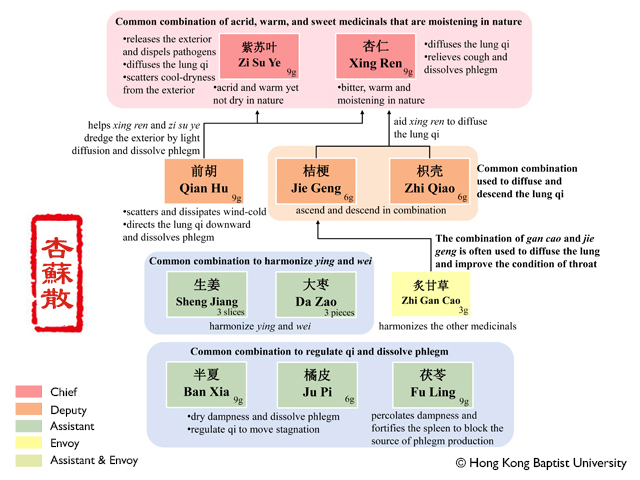
| Chief | Zi Su Ye |
| |
| Chief | Xing Ren |
| |
| Deputy | Qian Hu |
| |
| Deputy | Jie Geng |
| |
| Deputy | Zhi Qiao |
| |
| Assistant | Ban Xia |
| |
| Assistant | Ju Pi |
| |
| Assistant | Fu Ling |
| |
| Assistant | Sheng Jiang |
| |
| Assistant | Da Zao |
| |
| Envoy | Gan Cao |
| The combination of gan cao and jie geng is often used to diffuse the lung and improve the condition of throat. |